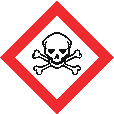Posted by admin under Asbestos, Federal OSHA, Hazard Communication, Management, OSHA, Training, Uncategorized
Comments Off on What makes it “hazardous”?
I love the show, “Dirty Jobs” with Mike Rowe. I find it fascinating what people are willing to do for work. Many of the jobs on the show have a true element of danger. Either a pinch point, an animal bite/kick, struck-by, heat/cold extreme, confined space, etc.
Did you ever consider what makes something hazardous?
My “deep thought for today” (thanks Jack Handy) is that education and training can make a job less hazardous. If you know how to do it right, and you know the risk, it doesn’t seem as dangerous anymore. The risk is there, but you know how to handle it, so the “hazard” seems to fade. This week I’ve given two separate asbestos classes to two different employers. At the beginning the employees were genuinely concerned about the hazards. By the end, they looked a lot more comfortable about upcoming project.
Is it any surprise that the HazCom standard is the most OSHA cited rule year over year?
So, keep up the training! Educate the employees on the dangers.
Posted by admin under Hazard Communication, MSDS
Comments Off on MSDS & Haz Comm & GHS – HELP!
Here are the questions I’ve been hearing in regards to the MSDS changes with respect to the new GHS (globally harmonized system of classification & labeling of chemicals)…
I am going to keep the answers REALLY short so you’ll actually read it. Keep in mind, I’m leaving some information out.
As an employer you need to train your employees on how the new MSDS will look.
- How soon do I need to comply?
For contractors, you’ll need to train your employees by Dec 1, 2013.
It’s a universal (global) method to make MSDS have more information and make them all look the same.
Well, MSDS’s are very good. They’re supposed to be written with the same 15 sections with no-blanks. But, some people don’t do a very good job. Or, in some cases, do an really good job of hiding harmful chemicals, but, legally cover themselves.
- Where can I get help? Right now?!
There will be FREE training (you may have to search for it though) and more information being published. This is a topic you can learn and present to your employees. Since the deadline is a year and 9 months away, you have some time.
- Ok, do you have any places for additional information?
- Is there information in spanish?
OSHA has some info here.
